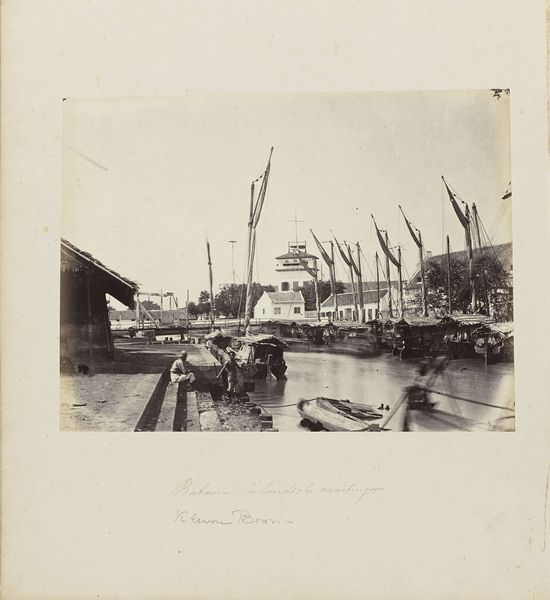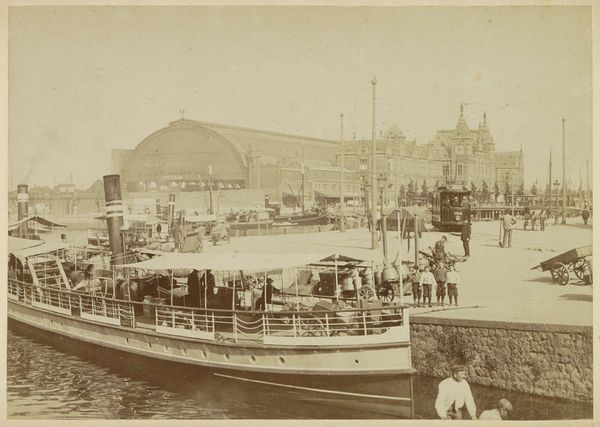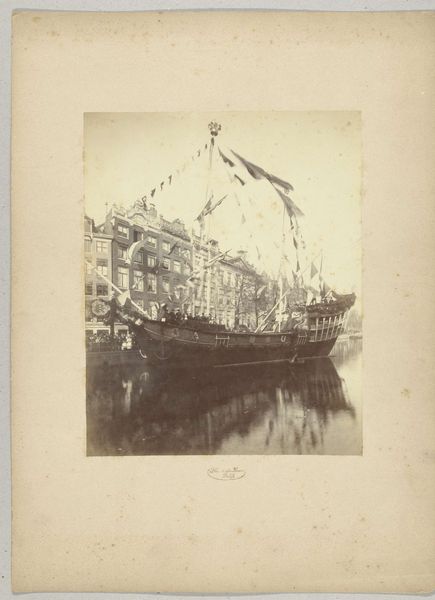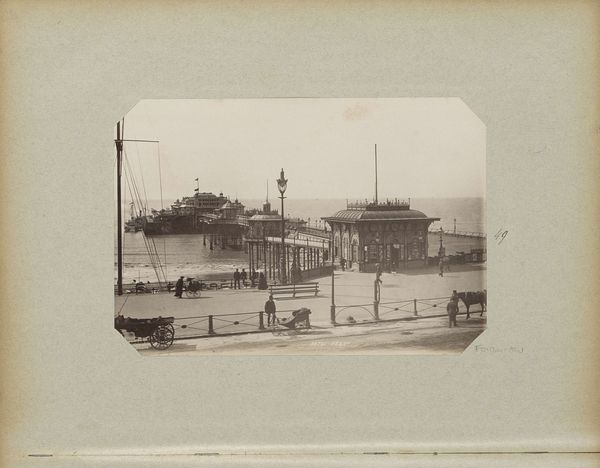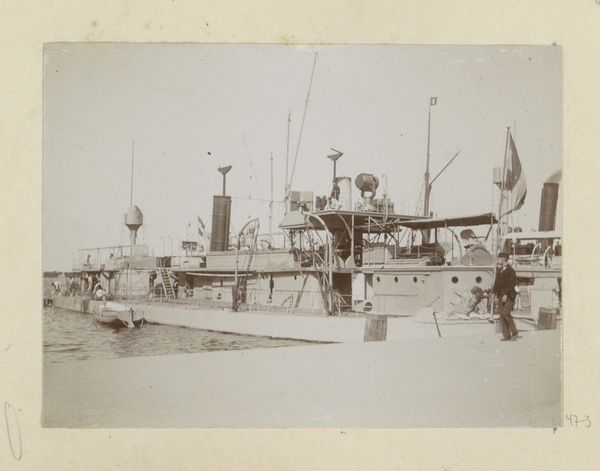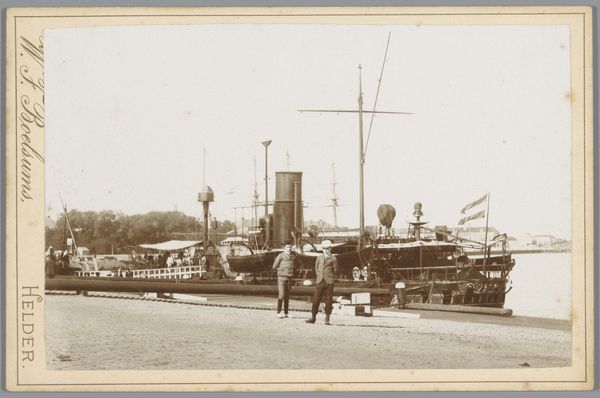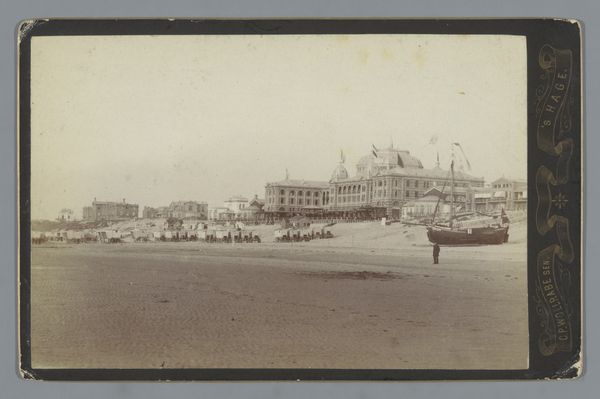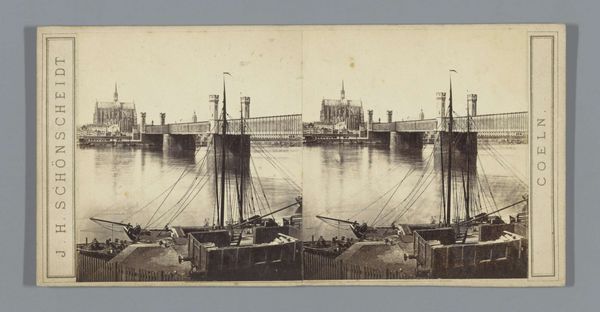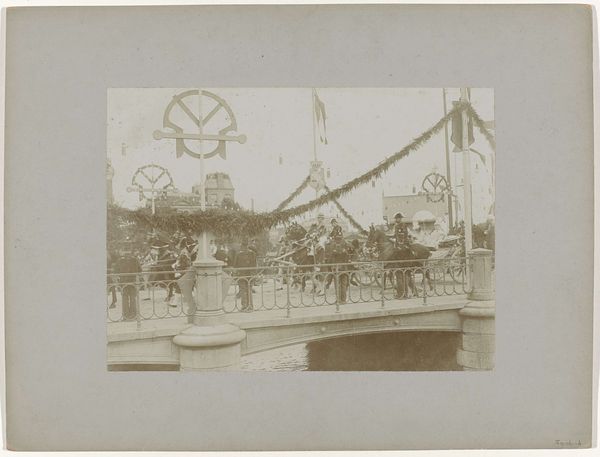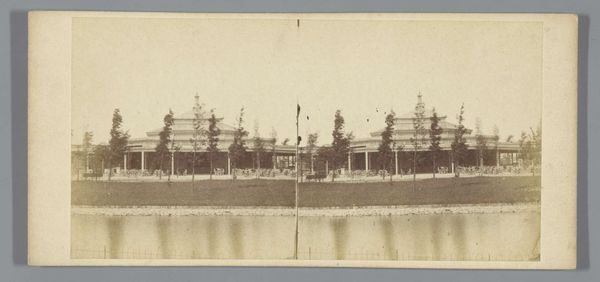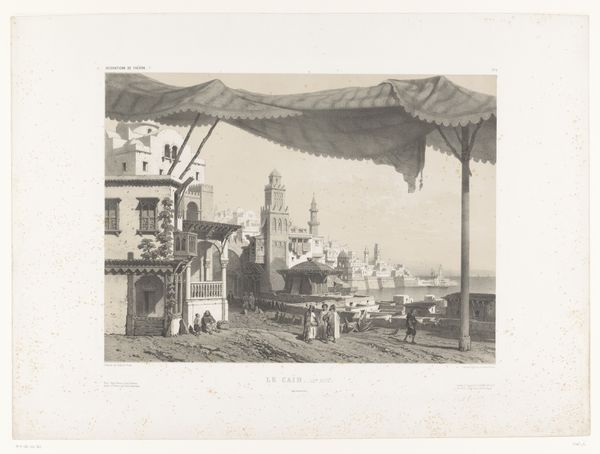
Decoratie bij de Hogesluis voor de ontvangst van Willem III en Emma in Amsterdam 1879
0:00
0:00
photography, albumen-print
#
landscape
#
outdoor photograph
#
photography
#
historical photography
#
19th century
#
cityscape
#
public art photography
#
albumen-print
Dimensions: height 262 mm, width 326 mm, height 394 mm, width 477 mm
Copyright: Rijks Museum: Open Domain
Curator: This albumen print from 1879, by Albert Greiner, captures a decorated Hogesluis bridge in Amsterdam for the ceremonial welcome of Willem III and Emma. It’s held in the Rijksmuseum collection. What strikes you about it at first glance? Editor: The overwhelming feeling is of a very orderly chaos. There are flags, decorations, and scaffolding all over this quite solid, yet ornate structure. It speaks to a specific moment in time. I am curious, who benefits from this display? Curator: Absolutely, it's important to recognize how carefully orchestrated royal entries were. They were designed to perform power. This elaborate staging with garlands, flags, and temporary structures wasn't simply aesthetic, it was political theater meant to visually impress and legitimize the monarchy's power to the population. Think of the labor and materials used for a one-day spectacle and who was employed. Editor: The photographic medium here also seems telling. An albumen print involves a rather intricate process, beginning with coating paper with egg white. There is an incredible amount of manual work in this production chain. Its wide availability allowed it to disseminate the monarchy's power, while simultaneously obscuring the very labor and expense behind its existence. Curator: Yes, precisely. We're also seeing a standardization and increased reproducibility that photography enables, which shapes our understanding of historical events even then. The very act of photographing the spectacle underscores its performative nature, disseminating royal imagery beyond those who attended. This royal event thus also provided a significant boost for the early photography market. Editor: Looking at the way this picture is put together is an intriguing reminder to think about class divisions during the period. And while we admire it today, we have to recall whose narratives this photograph was serving. How power shapes image-making remains, for me, its most critical message. Curator: Absolutely. Engaging with photography of this nature opens up fascinating avenues of inquiry that allow for consideration beyond the surface aesthetics. This royal celebration photograph helps reveal power dynamics between monarchy, burgeoning media and public perception. Editor: Well, on my part, it helps us not forget the labor and consumption required to create spectacles of any type.
Comments
No comments
Be the first to comment and join the conversation on the ultimate creative platform.
